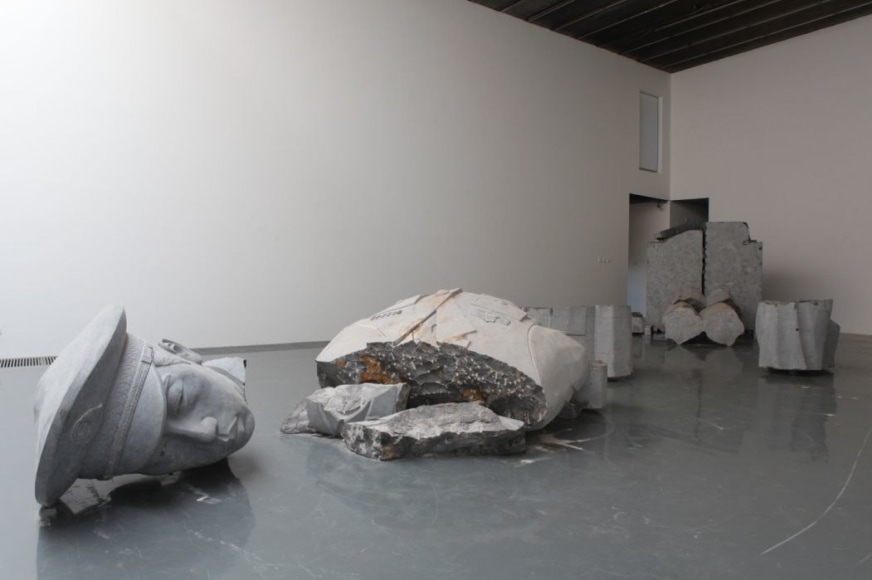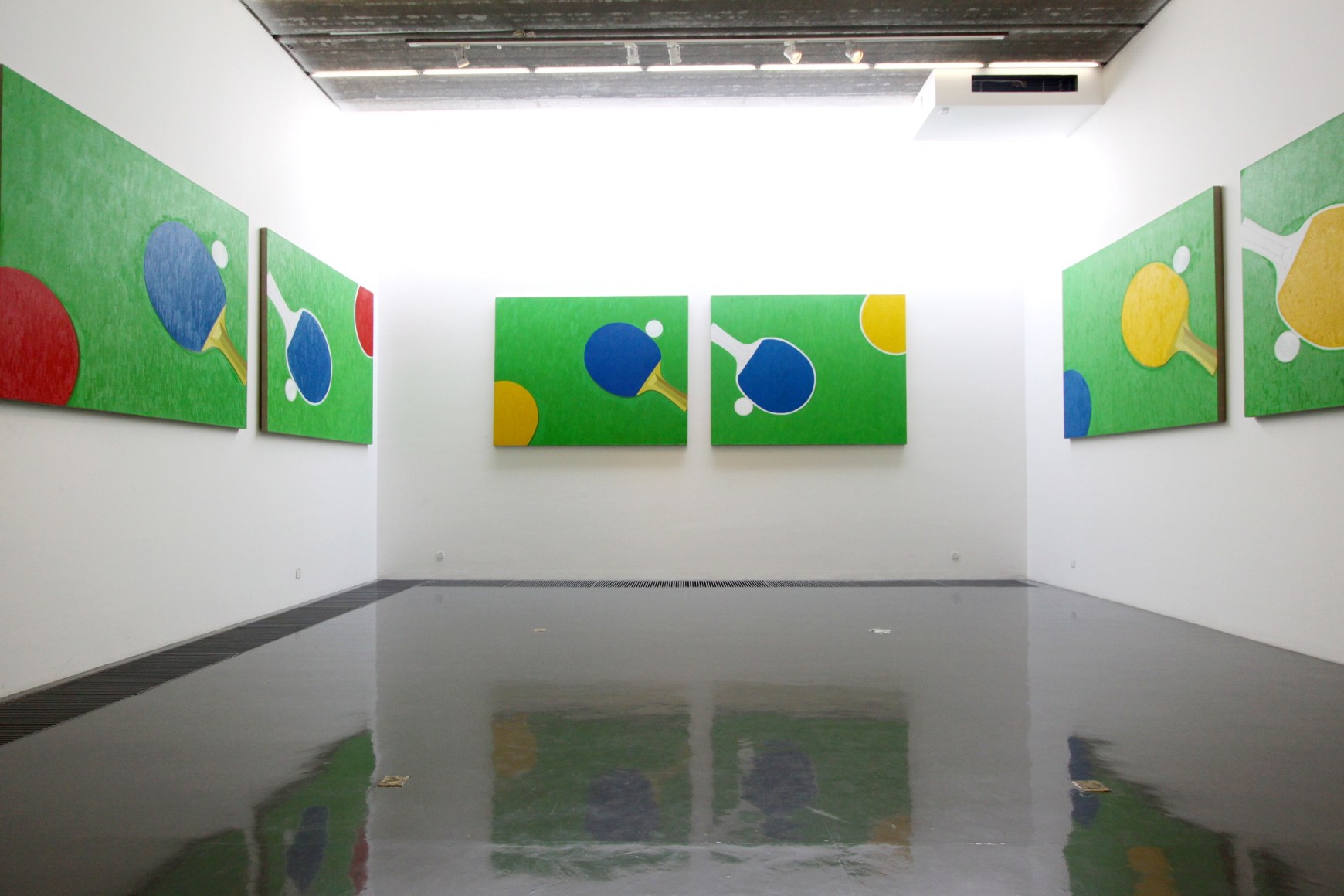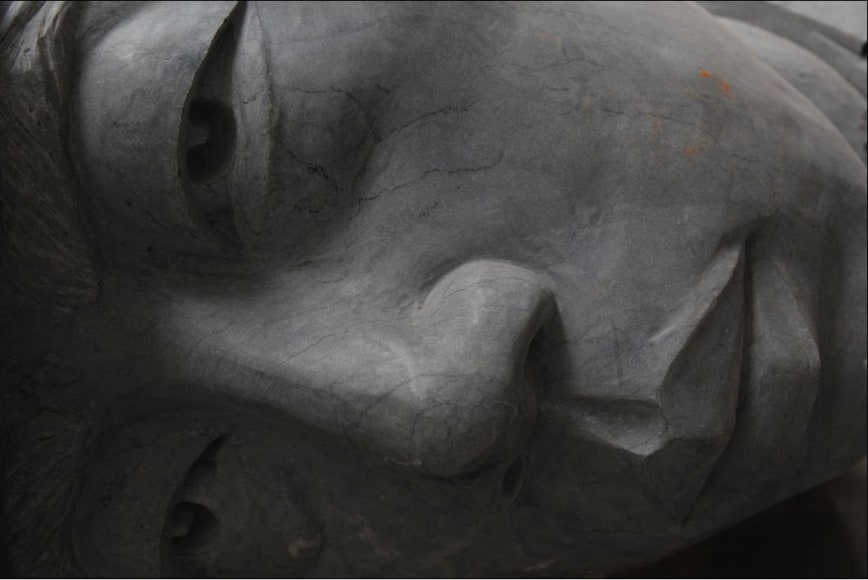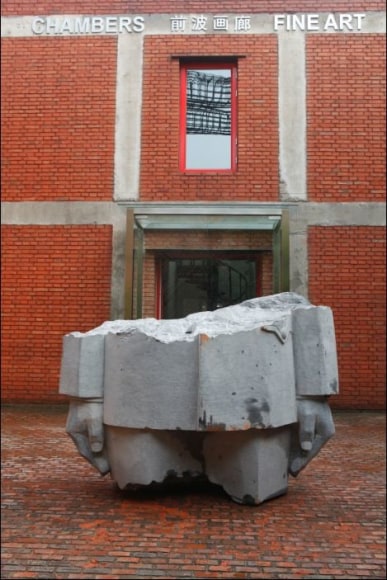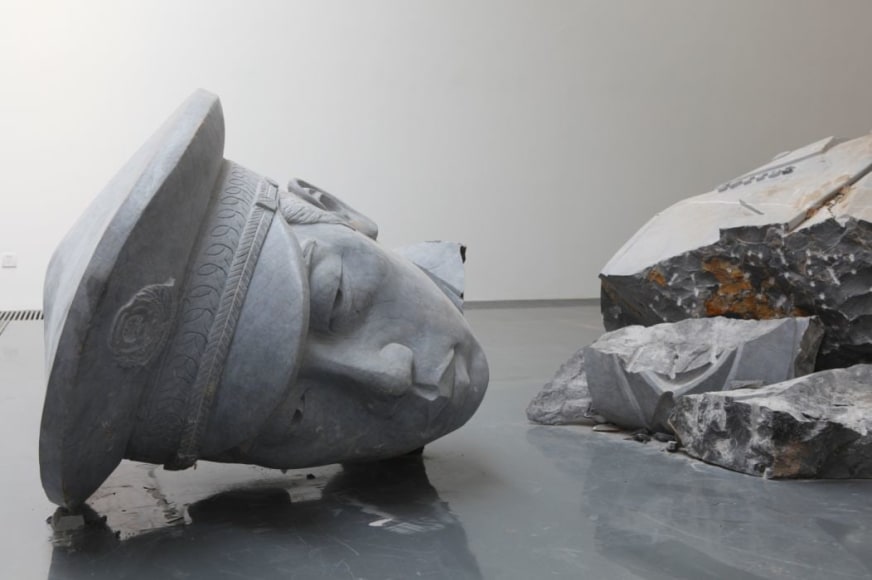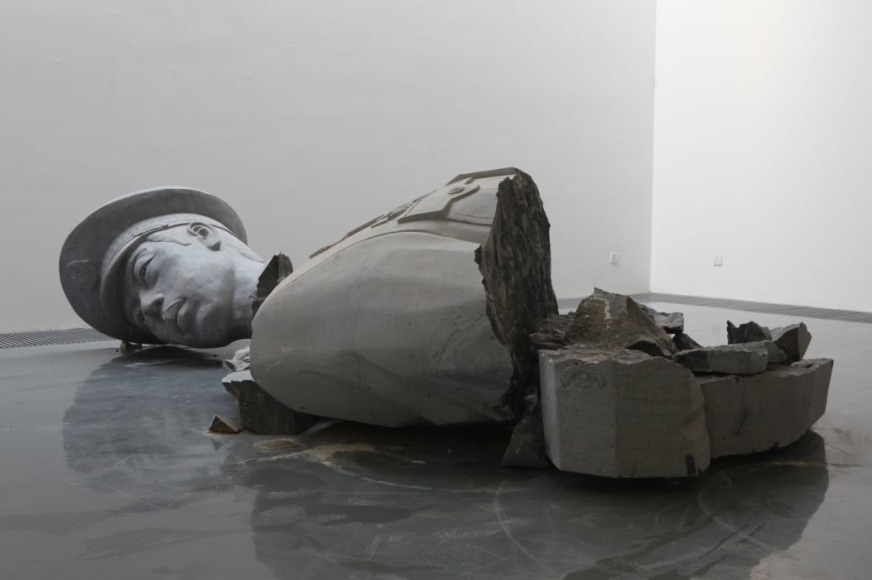Chambers Fine Art is pleased to the opening of According to Zhao Zhao: New Works on September 10, 2011. After graduating from the Xinjiang Academy of Fine Arts in Urumqi, he moved to Beijing in 2004 and soon encountered Ai Weiwei whom he has assisted in many capacities, beginning with the video Beijing: Chang ’an Boulevard and continuing until today.
During this crucial period, however, he also worked independently in a range of media that included video, photography, performance and object–making, gaining a semi-underground reputation as one of the most provocative artists of his generation. Unwilling to be pinned down to one medium or theme, he operated in many different locations that ranged from a gallery space in the Dashanzhi Art District (798) to East Tianshan Mountain, Xinjiang.
For the current exhibition, he has focused on ways in which his pragmatic approach, responding to circumstances as they arise and without any preconceived technical or formal approach might be modified to create a new body of work that is more thematically consistent. This is the thinking behind the new series of Ping Pong paintings and the Officer sculptures, both themes that resonate deeply in contemporary Chinese society, albeit in different ways.
For his return to painting, Zhao embraces a subject matter dear to the heart of the Chinese people, a sport in which they excel. The large, colorful paintings of ping pong reduce this fast-moving sport to a generalized, heraldic presentation of the paddles and ball used in the game. Like the rules of the game itself, they are orderly and consistent.
In contrast to the calm presentation of the paintings is the random nature of the Officer sculptures, scattered over the floor of the gallery. Using his own features for the figure of the officer standing at attention, he imagines how it might look many years later after it has been displaced from its pedestal. The sculptures may also be seen as a reflection on the practice of sculpture and the fate of public sculpture throughout history. Until now, Zhao Zhao’s three-dimensional objects have responded in various ways to the Duchampian tradition of the Ready Made but with his Officer he works in the traditional way that dates back to the Han Dynasty (206 BC – 220 AD), working with craftsmen in the quarries at Quyang, the biggest site for the production of sculpture in China.
Although apparently dissimilar, the two bodies of work complement each other in the way in which they offer simultaneously a commentary on the physical characteristics of painting and sculpture as traditionally conceived and on aspects of life in China today. According to Zhao Zhao, this is the way things are, whether we like it or not.
北京前波画廊非常荣幸地宣布将于2011年9月10日起举办《赵赵说:近作》。从乌鲁木齐的新疆美术学院毕业后,赵赵于2004年来到北京。不久他便遇到了艾未未,并从影像作品《北京:长安街沿线》开始在各方面协助这位前辈艺术家。同时,在这段关键的时期,他也采用了影像、摄影、行为艺术及实物制作等各种媒材进行独立创作,并常常被看作他同辈中最激进的艺术家之一。赵赵不愿意专注在某一特定媒材或主题上,而他的创作也在从798大山子艺术区到新疆天山等各类空间展示。
过去他并不预设技巧或形式上的手法,而是在不同的情况下采用不同的方式;而在此次个展中,他采用了新的思维方式,创造出一组主题较为鲜明的新作品。也就是这一思想启发了他的近作《乒乓》系列绘画以及《警官》雕塑作品。这两件作品的主题都以相当不同的方式和中国当今社会产生共鸣。
在回到绘画的这系列作品中,赵赵选择了深受中国人热爱的一个主题,那就是我们最擅长的一项运动。《乒乓》这一系列的大幅绘画将乒乓这一高速且充满激情的运动简化成了在绿色背景前对球拍和球的精心摆置。正如这项运动的规则一样,这系列作品也十分有序和统一。
和这些绘画作品的有序展示相反,《警官》这一雕塑作品随机分散在画廊的各个角落。赵赵以自己为模特制成一尊立正姿式的警官雕像,并想象它从基座上被拆除的多年后会是如何的景象。在西方,公共雕塑通常面临最终被摧毁的结局,这一作品也可以被视为对雕塑创作惯例的一种反思。迄今为止,赵赵的三维立体作品继承了杜尚“现成品”的艺术创作传统,而在《警官》系列中,他却采用了自从汉代以来的传统石雕工艺,并在曲阳这一中国最大的雕塑产地与工匠们合作。
尽管这两组作品截然不同,它们相辅相成,共同对传统意义上绘画和雕塑的特质、以及当今中国生活的方方面面进行了评论。正如赵赵所说,无论我们接受与否,事实就是如此。

